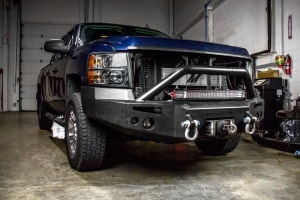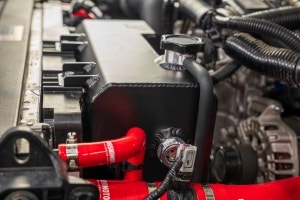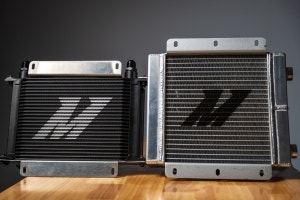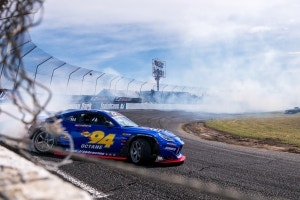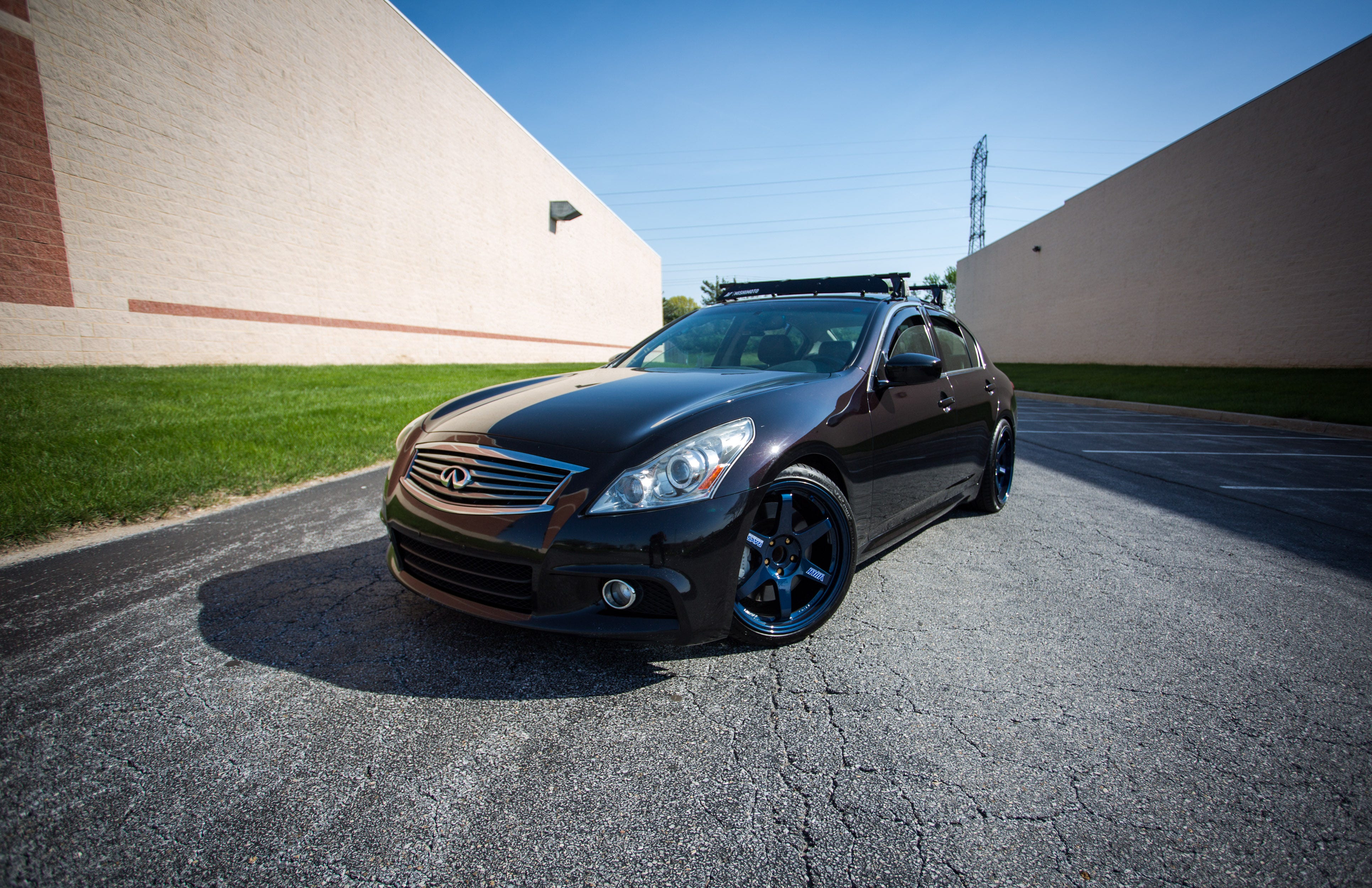
Protected Species - 2007-2015 Infiniti G37 / 2009+ Nissan 370Z Direct Fit Catch Can, Part 1 - Stock Review and Design Plans
In this day and age, if you're an enthusiast in search of a naturally aspirated, performance-oriented 6-cylinder, you're almost out of luck. The last 8 years have been the age of forced induction with the 4-cylinder turbo layout edging the V6 closer toward extinction. Unless you have the money to spend on a Porsche, there just aren't many options out there anymore for the fun 6-cylinder.
There is one manufacturer, though, who can deliver the "Fizz" (as James May would put it) without the fuss of a turbo or supercharger. That would be Nissan. I'm sure that most people would have visions of the dime-a-dozen Rogue or Sentra that dominates the roads these days. Anyone who knows anything about their Nissan and Infiniti is quite aware of the company's heritage. From the long-nosed Datsun coupes to the drifter's dream that was the 240SX"and let's not forget the 10+ generations of the Skyline/GT-R"Nissan has proved it's been around the block a few times.
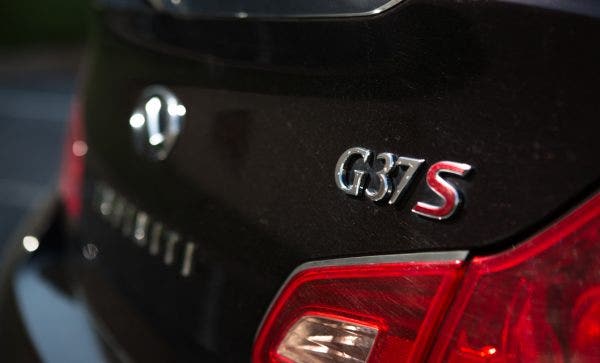
Nissan has carried on that long-standing tradition of speed with a two-pronged attack of the Infiniti G37 and 370Z. On one end of the spectrum, the Infiniti shoed its way into the luxury market, offering top notch amenities with the sporty underpinnings of the Z platform that rivaled the likes of Audi and BMW. The same platform gives the 370 its solid stature in the bends. What makes both of these cars stand out, though, is the unmistakable warble of their beating heart - the VQ37VHR.

Just about every automotive publication out there gives Nissan the recognition it deserves for their VQ series' engines.
Nissan's VQ V6 lineup has been widely recognized as one of the best engines out there, the latest version being no exception. The high output combined with the low-end grunt that doesn't need to wait for any turbos makes this one of the most versatile engines equipped across the Nissan and Infiniti line. All of this, of course, doesn't come without a few drawbacks.
Nissan developed some serious innovations for the VQ with the launch of the 3.7L version. For instance, adding VVEL, or their own version of variable valve timing. There are two distinct characteristics that when combined make the engine run more efficiently, but not without the cost of that efficiency and power. The VQ37VHR runs at a fairly high compression ratio (11:1), especially for a gas-powered car. The high compression is great to give your G or Z the power it needs, but can put a serious strain on the piston rings, ultimately forcing unwanted gasses and fuel vapors into the crankcase.
Like any modern vehicle, the VQ engine is equipped with a crankcase ventilation system, consisting of a positive crankcase ventilation (PCV) and crank case ventilation (CCV), which route that pressure back through the intake. While this might sound like an efficient use of airflow, those crankcase gasses are full of fuel vapors and oil droplets.
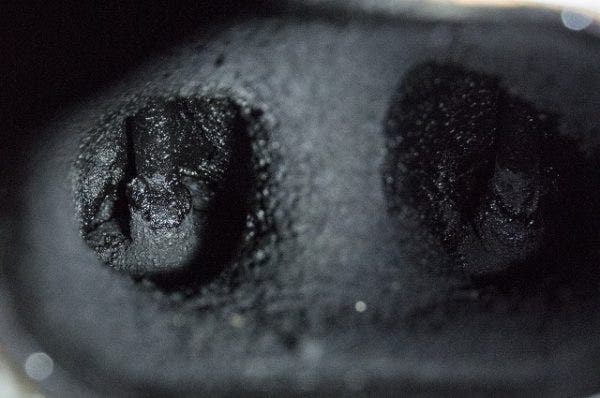
This might not be from our loaner G37, but it's the perfect example of what can happen to your intake valves if left unguarded from blow-by gasses.
The polar bears, rainforest critters, and EPA are more than satisfied when those harmful vapors aren't venting straight into the atmosphere, but it's the intake valves that then take the brunt of those contaminates. Even though the VQ37HVR is still running a port-injection system, with the amount of potential blow-by caused by the high-compression, the detergents washing over might still not be enough to combat the tenacious carbon buildup. It goes without saying that sticky valves aren't exactly conducive parts for keeping your sports car, well, sporty.

Our fabricator, Mike, works on securing a pair of our universal catch can brackets to a mounting plate for use as a preliminary prototype. Our production bracket will sport a much more fashionable appearance
There is a way to impede the frontal assault on your valves, which we've already been working on here in New Castle. The plan is to design a direct-fit catch can kit that will intercept and separate the harmful blow-by contaminates before they re-enter your intake. Nissan was sure to make that a challenge for us, though. The serious lack of available space limited our potential mounting locations. The VQ37 also features dual intakes, meaning dual PCV lines. We figured that two sources of blow-by would be too much for one of our compact cans, so we planned for two.

Even though the engine bay in the G37 and the 370Z is tight, our engineer was able to mount our can couple right next to the radiator.
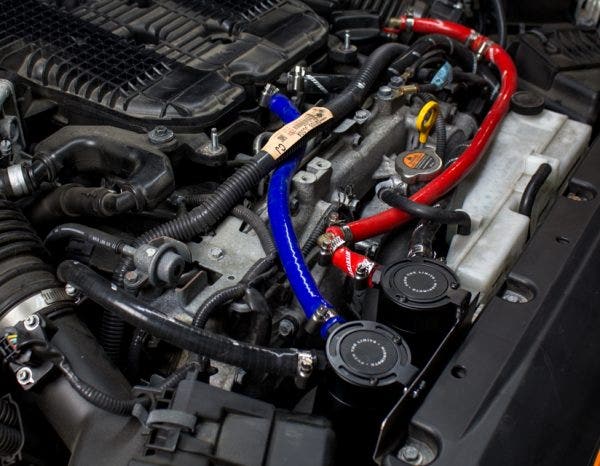
With a mounting location and prototype bracket devised for our loaner G37, our engineer creatively routed the network of lines to reroute the crankcase gasses through our air-oil separators. With the lines installed, and the engine bay buttoned up, we sent our loaner G out for the standard 1000-mile test cycle to see just how much the VQ37 is slowing itself down over time.
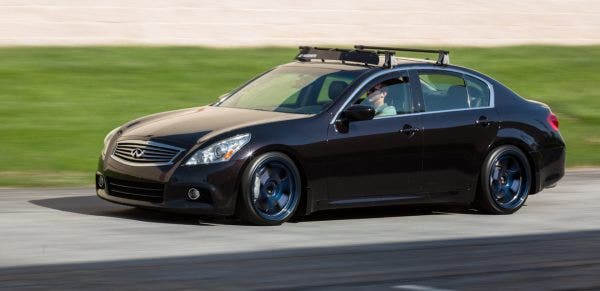
Thanks for Reading!
-Nick
